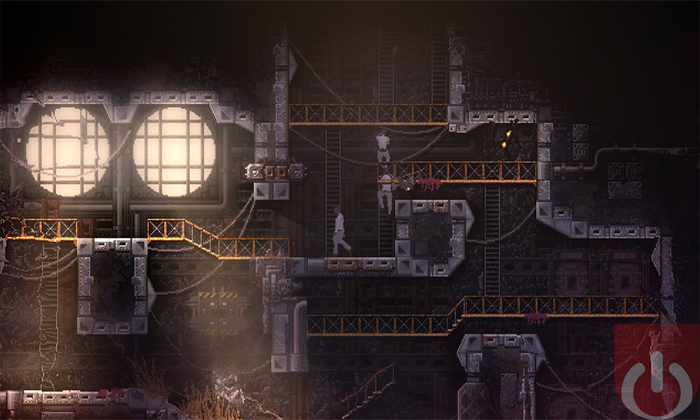Carrion
Carrion doesn’t offer a unique premise. There are plenty of games that feature monstrous protagonists. Some dating back decades. That said, Carrion’s propensity to provide a horrifying experience is top notch. Rarely have I seen NPCs this afraid to venture out alone.
Their fear makes sense. Being stalked by an amorphous creature while trapped in an underground facility isn’t the most ideal of situations. They’ll try their best to muster through though. Security protocols are enacted. Heavy weapons are deployed. Buddy systems, patrol routes – everything short of a full evacuation is needed. The monster can’t escape.
Phobia Game Studio’s Carrion is aptly titled. Players will move through a labyrinth-like facility as a giant mound of flesh, its many tendrils pulling it every which way. The goal is to free itself by circumventing sealed labs, explosive traps, and human/robotic adversaries. This is mostly done by solving cleverly designed puzzles using found abilities à la Metroid. It starts out by squeezing through vents and ripping doors from their hinges. As the creature grows and develops, new locations leading deeper into the facility are made accessible. By becoming invisible, it can sneak past sensors. Concrete barriers that once proved troublesome can eventually be impaled and pulled from their resting places.
This type of gameplay centers on trekking back and forth between locations. Carrion doesn’t suffer from overused spaces though. The typical looping of environments is only hindered by an absent map; it’s rather easy to get lost given the vastness of these interconnected areas. Visual clues are provided to help keep players on the right path. Still, there were more than a few areas that had me scratching my head.
The frequent backtracking does extend Carrion’s campaign. Just not obnoxiously so – I completed the game in about four hours. While the final segments proved a bit tiresome, their foundation being a culmination of previously learned tactics, the overall experience was rather enjoyable. This was in part, due to the way the game’s puzzles incorporated the size and shape of the monster at key moments.
Gaining new abilities made the monster grew in size and health. When I was small, I could do things like turn invisible or send a web-like appendage through small spaces to grab levers. Direct assaults on humans with weapons wasn’t smart. A few sizes up and I’d be able to smash through wooden barriers. I’d also be able to take more damage during a fight. So on and so forth. The interesting part about this element was that my change in size meant a change in skills. Growing past a certain threshold would remove my invisibility, for instance, making it impossible to get through certain secure locations.
A puzzle’s solution was always tied to my size. The trick involved finding strategically placed pools of strange liquid to either dump and/or reabsorb portions of my flesh in. This would then, let me choose which version of myself to use going forward. Clever. The logic surrounding the moment to moment gameplay was sound. It didn’t take long before I started noticing an approaching obstacle and the need to change shape. There would still be factors to consider – a smaller size meant less health – which made getting past a tough spot feel all the more rewarding.
There were a few segments where I had to control a human instead of the monster. They weren’t long or very involved at all. They did feature an interesting twist. Basically, the less you know about them, the better.
Being able to solve a tricky puzzle felt great. It’s the horror-based elements that really entertain though. Methodically hunt for prey, dragging helpless scientists underwater or through cracks in a wall. Or quickly traverse through corridors full of people, grabbing and slamming their bodies about before biting them in half. There was no wrong way to approach dismemberment early on. Eventually, a few special victims would show. Carrying flame throwers, force fields, and piloting mechs – these NPCs required some finesse to dispatch. Especially if they were near puzzles that required a smaller you.
Regardless, these encounters were always bloody. Some humans would put up a fight. Others would run away screaming or cower in a corner. Their deaths usually granted life; the special soldiers couldn’t be eaten. I’d be remiss if I said I only stalked them to improve my chances of survival though. Nope. Most of my savagery came from playing my part in this reverse horror game. I enjoyed being the monster.
Gameplay:
8
Carrion’s Metroid inspired gameplay and unique horror elements provide an entertaining experience.
Graphics:
8
The attention to detail is nice. And I dig the retro aesthetics.
Sound:
8
The score and sound effect help in selling the game’s nightmarish vibe.
Replay Value:
5
Aside from the thrill that comes from hunting NPCs, there isn’t much to warrant multiple playthroughs.
Final Score:
7.3



